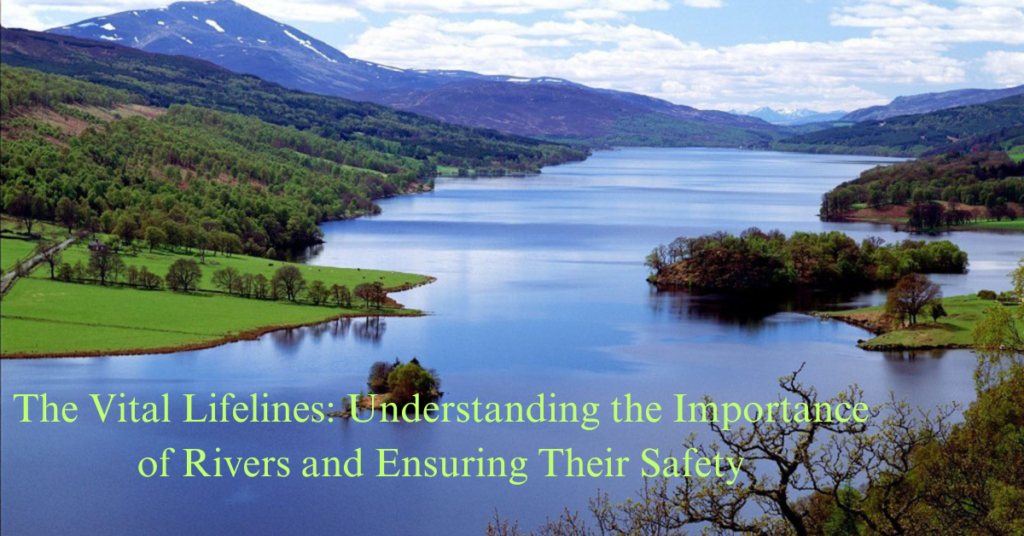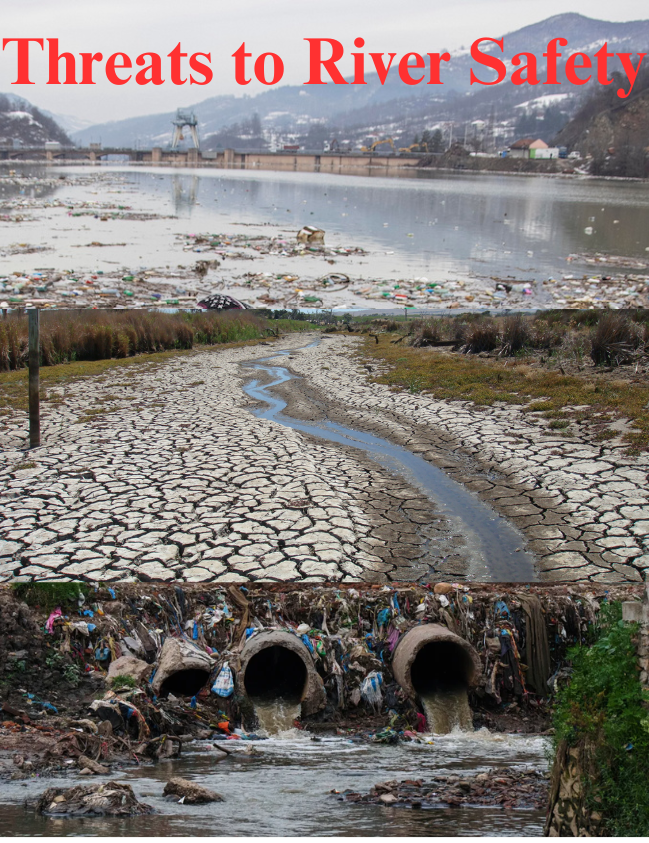The Vital Lifelines: Understanding the Importance of Rivers and Ensuring Their Safety

Table of Contents
The Vital Lifelines : Understanding the Importance of Rivers
Rivers: Nurturing Nature’s Pulse for Sustainable Futures Rivers are like nature’s bloodstream, flowing through landscapes and supporting life wherever they go. They’re not just water; they’re bustling ecosystems full of plants, animals, and tiny creatures. Along their banks, lush forests grow, providing homes for all sorts of wildlife.
For humans, rivers have always been crucial. Ancient civilizations sprouted up along rivers because they provided water for crops and transportation for trading goods. Even today, rivers help farmers grow food and allow ships to carry cargo around the world.
The Vital Lifelines: Understanding the Importance of Rivers and Ensuring Their Safety
Rivers, those majestic waterways etching through landscapes, serve as the lifeblood of our planet. Their significance extends far beyond their physical presence, shaping ecosystems, sustaining livelihoods, and nurturing civilizations. From the cradle of ancient societies to the beating heart of modern economies, rivers stand as testament to the intricate interplay between nature and humanity. However, amidst the awe-inspiring beauty lies a pressing need for stewardship, for the safety of rivers is paramount to the well-being of our planet and its inhabitants.
Rivers: Nourishing Earth’s Ecosystems
Rivers are not just bodies of water; they are dynamic ecosystems teeming with life. From the towering peaks of the Andes to the sprawling plains of the Amazon, rivers carve their paths, shaping the landscapes they traverse. Along their banks, lush forests thrive, providing habitat for myriad species of plants, animals, and microorganisms. Riparian zones, the fertile strips of land bordering rivers, serve as vital corridors for biodiversity, supporting diverse communities of flora and fauna.
Moreover, rivers play a crucial role in nutrient cycling and ecosystem function. They transport sediments and organic matter downstream, enriching floodplains and deltas with nutrients essential for plant growth. Flood events, once viewed as destructive forces, are now recognized as essential for maintaining the health of riverine ecosystems, replenishing soil fertility and sustaining biodiversity.
The Lifeblood of Human Civilization
Since time immemorial, rivers have been intertwined with the rise and fall of human civilizations. From the fertile crescent of Mesopotamia to the bustling metropolises of the modern world, rivers have served as conduits of commerce, communication, and culture. The earliest settlements emerged along the banks of rivers, drawn by the promise of fertile soil and abundant water.
Rivers provide water for irrigation, enabling agriculture to flourish in regions where rainfall is scarce. The Nile, the Ganges, the Yangtze – these rivers sustain millions of people, their waters irrigating fields and orchards, ensuring food security for entire nations. Furthermore, rivers serve as highways for transportation, facilitating trade and commerce between distant regions. The ancient Silk Road, for instance, owed much of its success to the network of rivers that connected civilizations across Asia and Europe.
Threats to River Safety

Despite their immense importance, rivers face a barrage of threats that endanger their safety and integrity. Pollution, stemming from industrial discharge, agricultural runoff, and urban waste, poses a significant risk to river ecosystems and human health. Chemical contaminants, such as heavy metals and pesticides, accumulate in the water, poisoning aquatic life and endangering communities that rely on rivers for drinking water and sustenance.
Habitat destruction and fragmentation also pose grave threats to river ecosystems. Urbanization, dam construction, and deforestation disrupt the natural flow of rivers, alter aquatic habitats, and impede the migration of fish and other aquatic species. Fragmentation of riverine habitats isolates populations, reduces genetic diversity, and diminishes the resilience of ecosystems to environmental changes.
Climate change further compounds these challenges, exacerbating water scarcity, altering precipitation patterns, and intensifying the frequency and severity of floods and droughts. Rising temperatures threaten to disrupt the delicate balance of river ecosystems, endangering species adapted to specific temperature ranges and increasing the prevalence of waterborne diseases.
Ensuring Their Safety
But rivers face serious threats. Pollution from factories, farms, and cities is making their water dirty and harmful to animals and people. Building dams and cities changes the way rivers flow, affecting the plants and animals that rely on them.
Climate change is making things worse. It’s causing more floods and droughts, which can be devastating for communities living near rivers.
We need to protect our rivers. That means stopping pollution, restoring damaged areas along riverbanks, and finding ways to help rivers cope with climate change. We can do this by using cleaner practices in farming and industry, planting trees along riverbanks, and working together across borders to manage river resources wisely.
Rivers are essential to life on Earth, and it’s up to us to make sure they stay healthy and safe for generations to come.
Protecting and restoring the safety of rivers requires concerted efforts at local, national, and international levels. Adopting sustainable land-use practices is essential for minimizing pollution and habitat destruction. Regulations must be enacted to control industrial emissions, improve agricultural practices, and manage waste disposal, thereby reducing the impact of pollution on river ecosystems.
Restoring degraded riparian habitats and establishing protected areas along river corridors are crucial for preserving biodiversity and promoting ecosystem resilience. This entails reforestation efforts, removing barriers to fish migration, and implementing measures to prevent soil erosion and sedimentation. Furthermore, engaging local communities and indigenous peoples in conservation efforts can leverage traditional knowledge and practices for sustainable river management.
Investing in green infrastructure and nature-based solutions can enhance the resilience of rivers to climate change while providing additional benefits such as flood protection and water purification. Green roofs, permeable pavements, and constructed wetlands mimic natural hydrological processes, improving water quality and reducing the risk of pollution.
Furthermore, fostering international cooperation is essential for addressing transboundary issues such as river pollution and water resource management. Establishing frameworks for sharing data, coordinating monitoring efforts, and negotiating agreements on water allocation can facilitate equitable and sustainable management of shared river basins.
Conclusion
Rivers are the vital lifelines that sustain ecosystems, support livelihoods, and nurture civilizations. Ensuring their safety is paramount to the well-being of our planet and its inhabitants. By adopting holistic approaches that integrate ecological conservation, sustainable development, and climate resilience, we can uphold the integrity of rivers and harness their potential for the benefit of present and future generations. As stewards of these precious waterways, it is our responsibility to act decisively to protect and preserve the invaluable gift of flowing waters.


